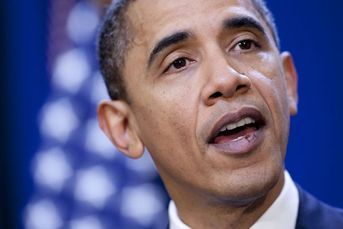Check out these pay-for-un-performance packages
If you're in the mood for some blood-pressure-raising non-fiction, take a look at The Corporate Library's latest report on executive compensation.
If you’re in the mood for some blood-pressure-raising non-fiction, take a look at The Corporate Library’s latest report on executive compensation.
The report from the corporate governance research firm reviewed regulatory filings from 2,000 publicly traded companies and came up with five chief executives deemed the “Highest-Paid Worst Performers” of 2008.
To make the list, a CEO had to have total realized income, including base salary, bonuses and stock, of at least $30 million. At the same time, the share price of the firm he or she oversaw had to have underperformed rivals and the broad sampling of stocks in the S&P 500 over the previous five years.
I don’t know whether you’d call that a winning or a losing formula, but it certainly reveals which CEOs were the biggest pocket-stuffers at the expense of their companies and shareholders.
Contrast that with the results of the 2009 Moss Adams/InvestmentNews Adviser Compensation and Staffing Study, which found that top managers at advisory firms tightened their own belts to weather the downturn.
Our study found that at 70% of the 757 advisory firms surveyed, the owner or CEO had cut his or her own salary during the crisis — and many to a greater degree than they cut their employees’ salaries.
As we pointed out in a recent editorial on this subject, advisory firm leaders, unlike many corporate CEOs, know how to lead by example. They put their employees and firms ahead of themselves, clearly mindful of the long-term implications of their actions on employee morale and firm stability.
From the results of The Corporate Library study, it’s clear that the heads of small-scale advisory firms know something about management that eludes many big-company CEOs.
For far too many corporate czars, hyper-generous personal compensation trumps concern for their employees, long-term company health and their responsibility to shareholders.
Heading the list of CEO gluttons was retailer Abercrombie & Fitch’s Michael Jeffries, who was awarded a total compensation package of $71.8 million last year, according to The Corporate Library.
On top of a base salary of $1.5 million, his compensation package included a $6 million retention bonus designed to keep him on board, even though he had already been there 17 years.
The report found that Mr. Jeffries’ compensation was in “the upper quartile” of his peer group. Translation: The compensation committee that determines his pay made sure he’d be paid more than what 75% of his rival CEOs receive.
Meanwhile, James Stewart, CEO of BJ Services Co., received $34.6 million in 2008, largely from value realized on stock options granted five years ago. While shares of BJ Services have outperformed other energy companies in the past year, they fell 50% in 2008 and have lagged behind the competition over a five-year period, according to The Corporate Library.
Another CEO whose company’s stock has lagged its peers is Brian Roberts of Comcast Corp. He received total compensation of $40.8 million last year, including a $2.7 million base salary and $22 million in earnings related to stock options.
Care for more examples?
International Paper Co., which suffered a share price drop of 63% last year, compared with a 38% drop in the S&P 500 index, paid CEO John Faraci $38.2 million. That included $21 million in pension payments he received while still working full time. That’s what you call gilded double-dipping.
Finally, Eugene Isenberg, CEO of Nabors Industries Ltd., enjoyed eye-popping compensation of $79.3 million last year, while shares of his oil and gas drilling company sank 51%.
I come away with two lessons from these reports: First, if you want to teach your children about how NOT to behave, have them study CEO compensation at big companies.
Second, if you want to learn how good managers do their jobs, take a look at the Moss Adams/InvestmentNews study.
Learn more about reprints and licensing for this article.





